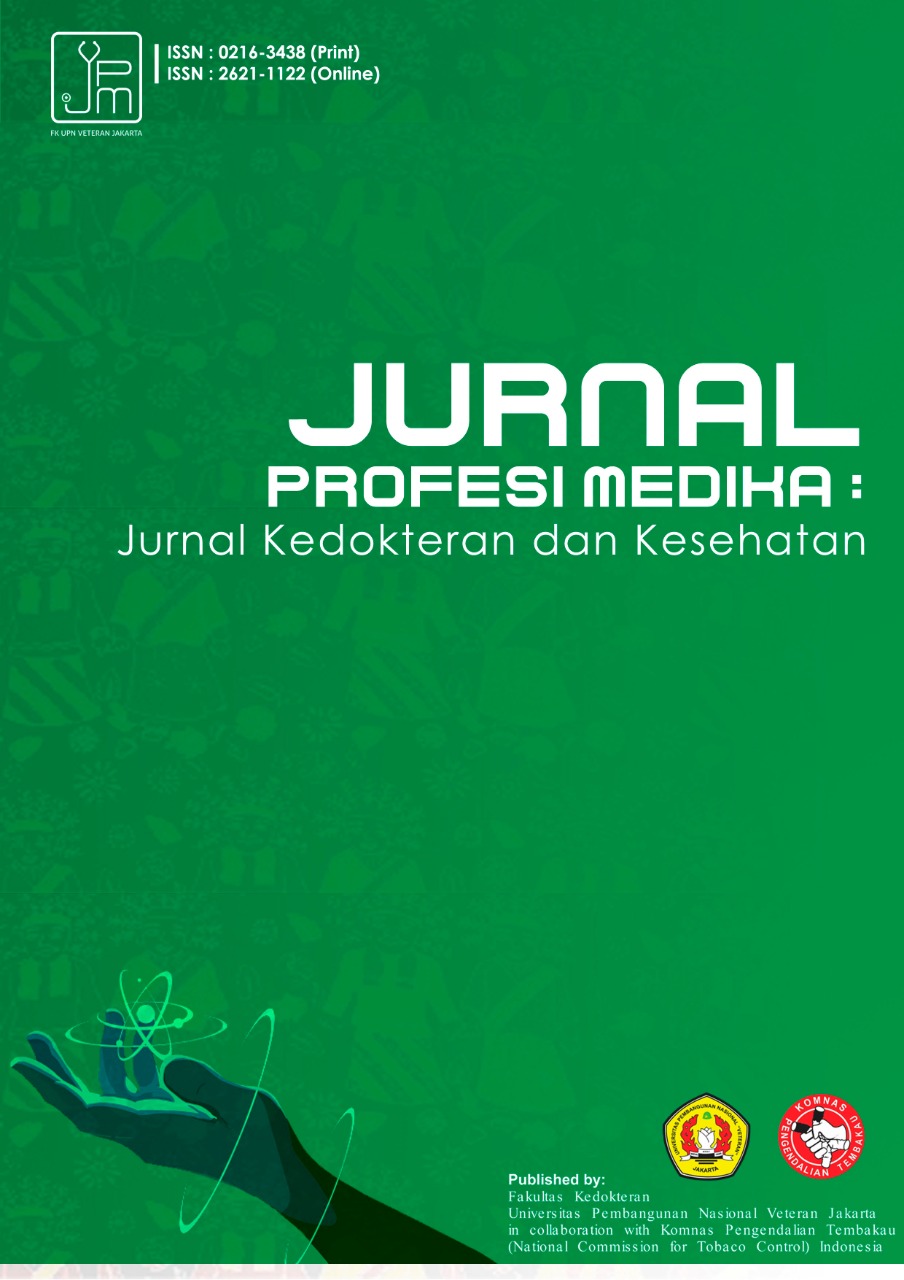Anesthesia in Low Ejection Fraction Patient : Case Report
DOI:
https://doi.org/10.33533/jpm.v17i2.6198Keywords:
Low ejection fraction, Heart failure, Anesthesia managementAbstract
Ejection fraction (EF) is the percentage of the difference between the end-diastolic volume and the end-systolic volume divided by the end-diastolic volume. This measurement is important in determining how well the heart is pumping out blood and in diagnosing heart failure (HF). Normally the percentage of EF is above 50%. A decrease in EF will make it difficult to perform anesthesia during surgery due to life-threatening irregular heartbeats, leading to sudden cardiac arrest and sudden death. Patients with a very low ejection fraction require identification of risk factors, preoperative evaluation and optimization, medical therapy, monitoring, and appropriate anesthetic technique and drugs. In this report, we present a 67-year-old woman with HFmrEF (estimated ejection fraction 46%) and coronary artery disease who underwent partial hip replacement surgery under general anesthesia. General anesthesia was performed on the patient and induction used fentanyl, midazolam, and atracurium. Management of patients is aimed at maintaining cardiac output and avoiding myocardial depression by maintaining a balance between oxygen supply and demand. Therefore good anesthetic management is needed to maintain the hemodynamic stability of the patient.
References
[1]. Soesanto AM. Pengukuran Fungsi Sistolik Global Ventrikel Kiri. J Kardiol Ind 2008; 29: 89–91.
[2]. Yancy CW, Jessup M, Bozkurt B, et al. 2013 ACCF/AHA guideline for the management of heart failure: A report of the American college of cardiology foundation/american heart association task force on practice guidelines. J Am Coll Cardiol; 62. Epub ahead of print 2013. DOI: 10.1016/j.jacc.2013.05.019.
[3]. Riskesdes. Riset kesehatan dasar.
[4]. Ponikowski P, Voors AA, Anker SD, et al. 2016 ESC Guidelines for the diagnosis and treatment of acute and chronic heart failure. Eur Heart J 2016; 37: 2129-2200m.
[5]. Shaheen MSA, Sardar K, Chowdhury AN, et al. Ejection Fraction <35% - Anaesthetic Experience of 236 Cases: A Retrospective Study. Anwer Khan Mod Med Coll J 2018; 9: 114–120.
[6]. Srinivasan NT, Schilling RJ. Sudden cardiac death and arrhythmias. Arrhythmia Electrophysiol Rev 2018; 7: 111–117.
[7]. Gulpinar K, Ozdemir S, Ozis E, et al. A preliminary study: Aspirin discontinuation before elective operations; When is the optimal timing? J Korean Surg Soc 2013; 85: 185–190.
[8]. Holinstat M. Normal platelet function. Cancer Metastasis Rev 2017; 36: 195–198.
[9]. Felker GM, Fudim M. Acute decompensated heart failure. Cardiol Secrets 2017; 36: 233–240.
[10]. Hedge, J, Balajibabu P, Sivaraman T. The patient with ischaemic heart disease undergoing non cardiac surgery. Indian J Anaesth 2017; 61: 705–711.
[11]. Andersson C, Mérie C, Jørgensen M, et al. Association of β-blocker therapy with risks of adverse cardiovascular events and deaths in patients with ischemic heart disease undergoing noncardiac surgery: A Danish nationwide cohort study. JAMA Intern Med 2014; 174: 336–344.
[12]. Butterworth JF, Mackey DC, Wasnick JD. Morgan and Mikhail’s Clinical Anesthesiology, 7th Edition. McGraw-Hill Education, https://books.google.co.id/books?id=LgfXzgEACAAJ (2022).
[13]. Dolinak D. Opioid Toxicity. Acad Forensic Pathol 2017; 7: 19–35.
[14]. Iyer V, Russell WJ. Induction using fentanyl to suppress the intubation response in the cardiac patient: What is the optimal dose? Anaesth Intensive Care 1988; 16: 411–417.
[15]. Lamerkabel R, Tambajong H, Lalenoh D. Gambaran Lama Kerja Rokuronium Pada Pasien Yang Menjalani Anestesia Umum Di Instalasi Bedah Sentral Rsup. Prof. Dr. R. D. Kandou Manado. e-CliniC 2014; 2: 1–5.
[16]. Raj A, Singh N, Gupta KB, et al. Comparative evaluation of several gene targets for designing a Multiplex-PCR for an early diagnosis of extrapulmonary tuberculosis. Yonsei Med J 2016; 57: 88–96.
[17]. Jaka S. Uji banding Efedrin 15MG dengan Efedrin 5MG Bolus Intravena dalam pencegahan hipotensi selama anestesi spinal pada operasi seksio sesaria. Univ Gadjah Mada.
[18]. Brioni JD, Varughese S, Ahmed R, et al. A clinical review of inhalation anesthesia with sevoflurane: from early research to emerging topics. J Anesth 2017; 31: 764–778.
Downloads
Published
How to Cite
Issue
Section
Categories
License
Copyright (c) 2023 Jurnal Profesi Medika : Jurnal Kedokteran dan Kesehatan

This work is licensed under a Creative Commons Attribution-NonCommercial 4.0 International License.
Copyright Notice
All articles submitted by the author and published in the Jurnal Profesi Medika : Jurnal Kedokteran dan Kesehatan, are fully copyrighted by the publication of Jurnal Profesi Medika : Jurnal Kedokteran dan Kesehatan under the Creative Commons Attribution-NonCommercial 4.0 International License by technically filling out the copyright transfer agreement and sending it to the publisher
Note :
The author can include in separate contractual arrangements for the non-exclusive distribution of rich versions of journal publications (for example: posting them to an institutional repository or publishing them in a book), with the acknowledgment of their initial publication in this journal.
Authors are permitted and encouraged to post their work online (for example: in an institutional repository or on their website) before and during the submission process because it can lead to productive exchanges, as well as earlier and more powerful citations of published works. (See Open Access Effects).






